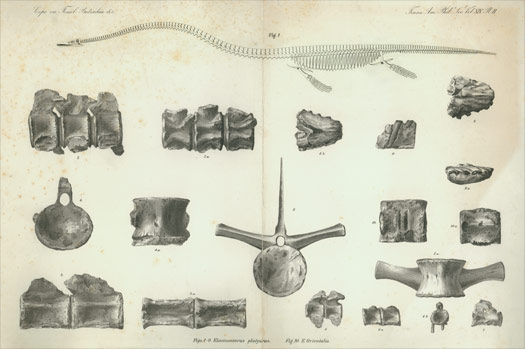King Kong. A name not often synonymous with Elasmosaurus. However, of all the battles fought by King Kong and his progeny, the battle fought against Elasmosaurus, by his "son" of course, in 1933's Son of Kong is probably one of the least talked about but most stylized in terms of the "that's a very odd animal fight" reaction of movie going audiences. The Elasmosaurus depicted was based, we can tell by the model and the combat, pretty much entirely from Charles Knight's locomotive styling in the 1897 painting he published which was shared here on Saturday. Movie clips from 1933 are hard to find sadly, so I have to make due today sharing this fantastic still:
Elasmosaurus has appeared in many "hoax" films, "Nessie" of Loch Ness fame, amongst a few other worldwide cryptic species, are considered to potentially be Elasmosaurs, and has also appeared in cartoons, such as Dinosaur Train (Netflix link to the specific episode here). The Dinosaur Train episode features an Elasmosaurus named Elmer and, in terms of cartoons, is fairly accurate with concern to the current scientific views of Elasmosaurus. Elmer does still have quite a vertical neck range though that is not correct in current views. In true modern kid's cartoon fashion, there is a song that goes along with the episode:
I do love the accuracy of the teeth on the Elasmosaurus. All in all, it's a good learning experience, as far as I am concerned (I know there are some that do not like Dinosaur Train much in terms of scientific accuracy), for the sharing of information with children about Elasmosaurus. "Dr. Scott" does a great job adding in things we have discussed about Elasmosaurus after the vignette of Elasmosaurus ends.
 |
| Tail choked! |
I do love the accuracy of the teeth on the Elasmosaurus. All in all, it's a good learning experience, as far as I am concerned (I know there are some that do not like Dinosaur Train much in terms of scientific accuracy), for the sharing of information with children about Elasmosaurus. "Dr. Scott" does a great job adding in things we have discussed about Elasmosaurus after the vignette of Elasmosaurus ends.






















